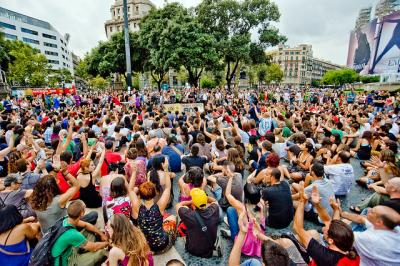
Activism has lived primarily in the middle and upper-middle classes. That class-based insularity is preventing us from building the power of working people. From radical subcultural circles to non-profit organisations to the Democratic party, the leadership of the broad left over the past 40 years has become concentrated in the top 20 per cent of US society.
We all know about the 1 per cent problem, but we also have a 20 per cent problem. There is a class insularity at the top that affects all kinds of institutions, particularly political institutions. It has made many of them into clubhouses. There are a lot of people for whom the activist identity stands between them and taking action on the issues they care about, because in order to take action on climate or labour or whatever, they have to take on this niche identity which involves them assimilating into a subculture and becoming someone else. And they don’t want to do it.
That should not be a requirement for taking political action. People should be able to come as they are, not having to figure out how to fit into this radical, or liberal, or whatever it is, activist clubhouse.
Go to the GEO front page

Add new comment